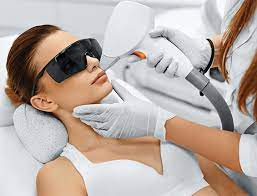A beauty therapy training course is designed for learners who want to work in the beauty industry and wish to study, develop, and practice the skills required by the industry. The emphasis in this course is on the trainee’s ability to perform as a confident and professional beauty therapist.
The training program’s key objectives of leading beauty therapy courses are as follows:
- To give high-quality training to those interested in pursuing a career as a professional beauty therapist, makeup artist, or hairstylist, among other professions.
- To instill a culture of safety, cleanliness, health, and pleasure in training centers and workplaces, particularly in beauty salons.
- To improve the economic prospects for beautician graduates.
- To provide better services to the ever-growing clientele of beauticians.
- To gain a better understanding of the fundamentals
After action orientation, the student must have the following skills: the ability to collaboratively lead to good community change and system improvement.
- Ensure that hygiene standards are followed at work.
- Contribute to the creation of an environment that promotes safe product/equipment handling.
- Ensure that tasks are completed responsibly. (Create a sense of awareness/responsibility/practical approach)
- Develop a sense of responsibility.
- Develop a sense of personal hygiene.
- In the salon, you should be able to communicate well.
- Analyze several sorts of skin/hair structures
- Accuracy in the use of beauty treatments.
- Ability to choose salon items and machinery quickly.
- Controlling tools and equipment to reduce the danger of skin/hair damage, client pain, and achieving the desired aesthetic
- Physical stamina to stand for long periods without rest.
- Capacity
The pupil should be able to:
- Practice beauty therapy techniques after completing this course.
- Demonstrate an understanding of how to greet customers.
- Discuss the client’s demands as well as proper client maintenance methods.
- Defend yourself and others.
- Carry out normal salon tasks
- Ensure that sanitization protocols are followed.
- Make and cut various hairstyles.
- Identify the various types of skin and their facial features.
- Apply makeup to various skin types, such as oily, dry, acne-prone, and so on.
- Apply different hairstyles/cuts to different faces.
- Learn about salon work, such as safety considerations, skin and hair conditions, and so on.
- Select, operate, and handle equipment per industry requirements.
- Describe procedures for beauty therapy, proper appearance, communication, and social behavior, among other things.
- Become knowledgeable about henna makeup, facials, manicures, pedicures, body massages, hair coloring, beauty treatments, style, and application.
This trade is defined as:
Any procedure intended to maintain or enhance a person’s external physical appearance or to produce a greater sense of well-being, such as facial or body treatments, application of cosmetics, manicure or pedicure, application or mending of artificial nails, epilation, including electrolysis, hot or cold wax, is referred to as the beauty industry. Beauticians, beauty consultants, beauty therapists, spa therapists, make-up artists, and hair stylists are among the professionals in this field. Aspiring beauty therapists should be:
- Attentive
- Personal cleanliness
- Honest
- Motivated/devoted
- Sales/Time Management
- Knowledge
- Punctual
- Organized
- Friendly
- Communication skills
- Interpersonal skills.
Employment and advancement opportunities
- A beauty therapy diploma holder can work as a beautician or a beauty therapist.
- Salon Owner/Manager/Owner/Owner/Owner/Owner/
- Educator in the field of beauty.
- Supervisor in a salon for hairdressing and styling.
- In a beauty salon, you can work as a supervisor.
- Any other front desk management job related to the beauty sector, such as a supervisor for the promotion of sales of beauty items and equipment.
- They can open their own beauty salon.
- They can take care of themselves at home




